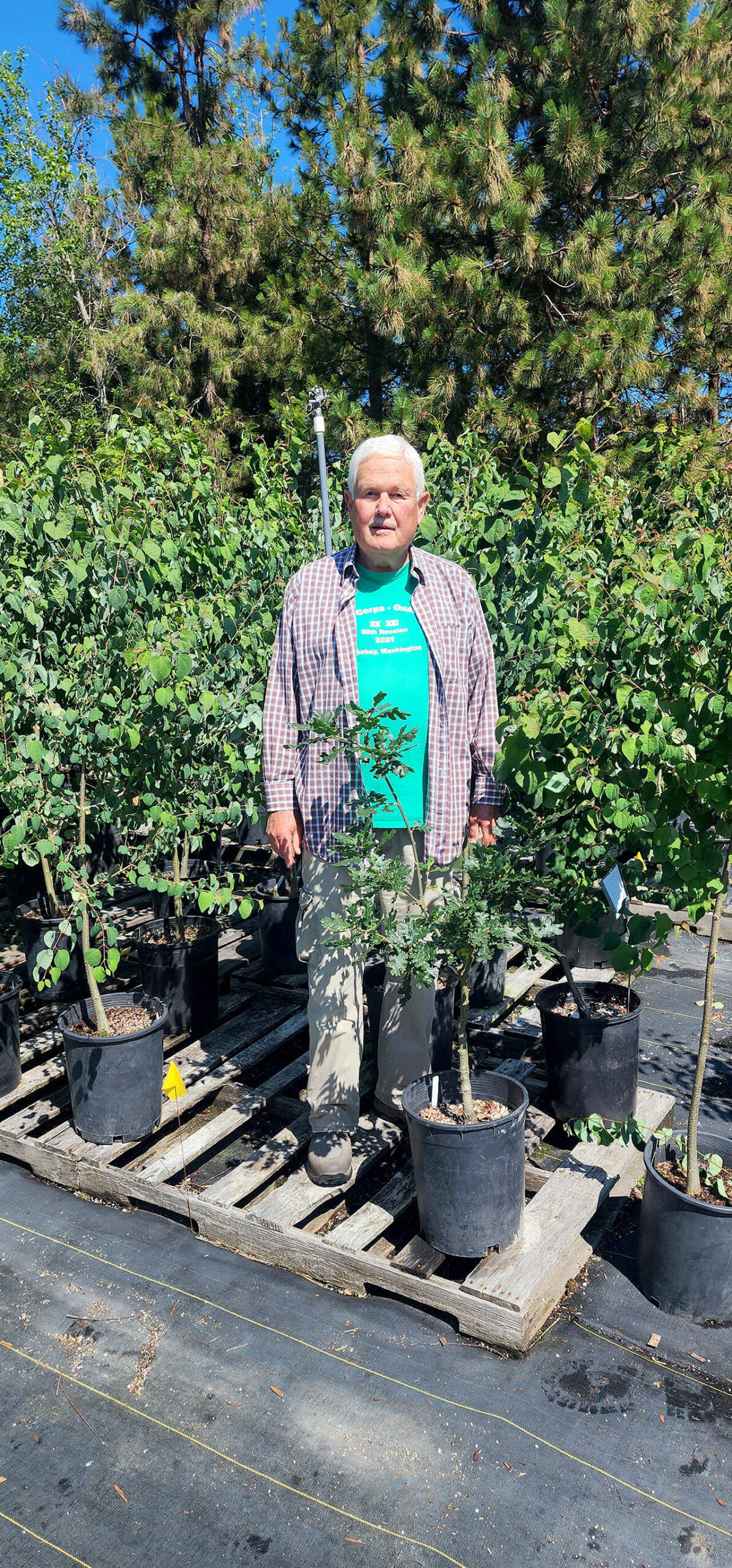HOW ABSOLUTELY FORTUNATE for Port Angeles that the ideally-named individual, Paul Forrest, has spent years acquiring, gathering and then assembling all the relevant and critical information to put together a City Shade Street Tree Planting Program.
The advantages to city shade trees are numerous and include not only the pleasing aesthetics but decreased temperatures that we see wracking the nation’s urban areas.
Shade trees also increase the ability of the surrounding soil to retain water due to their “shade value.”
This program also includes tried and tested varieties of trees that are appropriate for that curbside environment. And best of all, they are FREE to those who qualify. (Application must filed at www.cityofpa.us/1285/City-Shade-Street-Tree-Planting-Program).
Applications are only open to residents that live within the city limits of Port Angeles, and the program runs from July 22 through Sept. 6.
So, here is the perfect opportunity to lobby your city, town or village to adopt a City Shade Street Tree Program — the City of Port Angeles has done all the heavy lifting by putting together all the information needed to implement the program in your community!
Well then, how do I plant these or any other tree?
1. Dig a shallow, bowl-shaped hole. This should be the same depth as the container and three times as wide, with sloping sides.
2. Lay the container on its side to carefully remove the tree by tapping on the sides and bottom of the container. Carefully cutting down the sides of the container may make this process easier. Try to keep the soil around the roots intact. If the tree is root-bound, cut an X across the bottom of the root ball and four vertical slices on the sides.
3. Place the tree in the middle of the hole. Rotate the tree to its best orientation and keep the trunk vertical. Adjust the height of the tree to ensure the root flare, where the roots spread at the base of the tree, is an inch or two higher than the surrounding soil level to allow for settling. A shovel handle across the hole makes a good measuring device.
4. Fill and firmly pack the hole with the original soil. Do not add amendments or fertilizer which will create a ” flower pot” effect and impair growth. Use excess soil to create a watering basin around the edge of the hole.
5. Make a ring of mulch two- to three-inches deep around the tree. This should be at least as wide as the hole, but not closer than 2 to 3 inches from the trunk. The ring should be a “donut” not a “volcano”.
6. Stake the tree only if necessary. Trees usually become established faster and stronger if not staked. Remove supports after the first year.
7. If the soil is not fertile, a slow release fertilizer may improve growth. Do not use “weed and feed” fertilizers near the tree because they contain herbicides that will harm or kill the tree.
8. Newly planted trees will need deep watering during the first two summers. Deep watering is a method of getting water deep into the soil to promote deep root growth by watering infrequently, but with large volumes. Trees 1 – 3 inches in diameter should receive 15 gallons of water, once a week. Be sure to water consistently through the dry season, which can last until October.
There are three wonderful varieties selected for their ability to thrive here on the Peninsula and not be too large for the curbside. The three varieties are Scarlet Oak/American Red Oak, 65 feet tall and 45 feet wide; Katsura tree, 40 feet tall and 40 feet wide; and native Garry Oak, 65 feet tall and 45 feet wide.
So please, shade up our local streets and/or pressure your town to do the same!
And remember … stay well all!
________
Andrew May is a freelance writer and ornamental horticulturist who dreams of having Clallam and Jefferson counties nationally recognized as “Flower Peninsula USA.” Send him questions c/o Peninsula Daily News, P.O. Box 1330, Port Angeles, WA 98362, or email news@peninsuladailynews.com (subject line: Andrew May).

